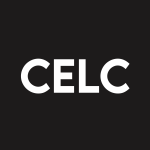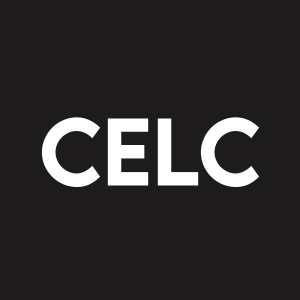Welcome to our dedicated page for Celcuity SEC filings (Ticker: CELC), a comprehensive resource for investors and traders seeking official regulatory documents including 10-K annual reports, 10-Q quarterly earnings, 8-K material events, and insider trading forms.
Tracking a clinical-stage biotech like Celcuity Inc means dissecting dense disclosures on trial endpoints, R&D burn, and licensing terms—details that can span hundreds of pages. If you have ever wondered where to locate the latest Celcuity quarterly earnings report 10-Q filing or how to decode a 300-page 10-K, you are not alone.
Stock Titan’s AI engine digests every sentence the moment it hits EDGAR, then delivers concise explanations in plain English. The result: Celcuity SEC filings explained simply. Whether you need understanding Celcuity SEC documents with AI or instant alerts on Celcuity Form 4 insider transactions real-time, our platform turns regulatory text into actionable context.
- 10-K: Get the Celcuity annual report 10-K simplified—clinical pipeline progress, cash runway, and risk factors, all summarized.
- 10-Q: Compare quarter-over-quarter R&D spend with automated charts and Celcuity earnings report filing analysis.
- 8-K: Stay ahead with Celcuity 8-K material events explained—from Phase 3 data releases to financing rounds.
- Form 4: Monitor Celcuity insider trading Form 4 transactions and track each Celcuity executive stock transactions Form 4 in real time.
- DEF 14A: Review the Celcuity proxy statement executive compensation section with AI-highlighted pay metrics.
Every filing is updated the moment Celcuity submits it, complete with AI-powered summaries, key-metric extractions, and side-by-side document comparisons. Skip the biotech jargon, save hours of manual reading, and focus on the insights that move Celcuity’s valuation.
Vicky Hahne, Chief Financial Officer of Celcuity Inc. (CELC), was granted a stock option to buy 80,000 shares of Common Stock on 08/18/2025 at an exercise price of $51.57 per share. The option becomes exercisable starting 08/18/2025 and expires on 08/18/2035. Following the grant, Ms. Hahne beneficially owns 80,000 underlying shares through this option. The vesting schedule specifies that 20,000 shares vest on 08/18/2026 and the remaining 60,000 vest monthly at 1/36th increments thereafter. The Form 4 was signed on 08/20/2025 by an attorney-in-fact on behalf of Ms. Hahne.
Celcuity Inc. reporting person Lance G. Laing, who serves as Chief Science Officer and a director, received a grant of a stock option covering 100,000 shares of common stock exercisable at $51.57 per share. The option grant is dated 08/18/2025, becomes exercisable on that date, and expires on 08/18/2035.
The filing shows Laing beneficially owns 100,000 shares underlying the option on a direct basis. Vesting terms are disclosed: 25,000 shares vest on 08/18/2026 and the remaining 75,000 vest monthly at a rate of 1/36th thereafter. The Form 4 was signed by an attorney-in-fact on behalf of Laing on 08/20/2025.
Brian F. Sullivan, Chief Executive Officer and Director of Celcuity Inc. (CELC), was granted two stock option awards on 08/18/2025 totaling 400,000 option shares. One option covers 250,000 shares with a $51.57 exercise price; 62,500 of those shares vest on 08/18/2026 and the remaining 187,500 vest monthly thereafter. The second option covers 150,000 shares with a $51.57 exercise price and vests in quarterly 1/4 increments upon the issuer's common stock reaching specified stock-price performance milestones. Both options expire 08/18/2035 and are reported as directly owned following the transactions.
Celcuity Inc. Schedule 13D/A Summary This Amendment No. 2 reports that a group led by Growth Equity Opportunities 18 VGE, LLC (part of New Enterprise Associates) beneficially owns a total of 3,535,561 shares of Celcuity common stock, representing 8.1% of the outstanding common stock as calculated on a 43,818,011 share base. The GEO position comprises 2,144,261 shares held plus rights to acquire 1,391,300 shares through a preferred warrant and conversion of Series A preferred, for a deemed total of 3,535,561 shares. The filing discloses that GEO converted 104,426 preferred shares into common on June 25, 2025, and completed aggregate open market sales of 150,000 common shares on July 25, 2025. The amendment states the reported beneficial ownership decreased by more than 1% due to an increase in Celcuity's shares outstanding and identifies the reporting entities, managers, sources of funds, and that no material legal proceedings are disclosed.
Celcuity Inc. reported interim financial details showing material financing and capital activity supporting its clinical programs. The company amended and restated a loan agreement that provided initial borrowings including Term A, B and C loans and contemplates additional tranches (Term D, Term E and optional Term F) tied to milestones and covenants; the Term Loans mature May 1, 2029 and bear variable interest with a portion payable in-kind. Innovatus has limited conversion and warrant rights tied to the loan.
Subsequent events include a completed equity offering of 1,836,842 shares and pre-funded warrants and the issuance of $201.25 million aggregate principal amount of 2.75% Convertible Senior Notes due 2031, generating approximately $194.9 million net proceeds. The company recognized a $5.0 million upfront license fee and issued $5.0 million in common stock to Pfizer and recorded a related R&D expense tied to an NDA filing deemed probable. Outstanding common shares increased to 38,914,208 as of June 30, 2025; no dividends were declared.
Perceptive Advisors LLC, Joseph Edelman and Perceptive Life Sciences Master Fund, Ltd. have filed Amendment No. 3 to Schedule 13G on Celcuity Inc. (NASDAQ: CELC). As of 30 June 2025 the group beneficially owns 1,633,208 common shares, equal to 4.31 % of the 37,866,358 shares outstanding (per Celcuity’s 15 May 2025 SEC filing). Because the position now stands at or below the 5 % threshold, Item 5 is checked, signalling ownership of �5 percent or less of a class.�
The shares are held directly by the Cayman-based Perceptive Life Sciences Master Fund. Voting and dispositive power over the full block is shared among the Master Fund, Perceptive Advisors (investment manager) and Mr. Edelman (managing member). None of the reporting persons holds sole voting or dispositive power. The filing states the securities were not acquired to influence control of the issuer. Signatures are dated 4 Aug 2025.


